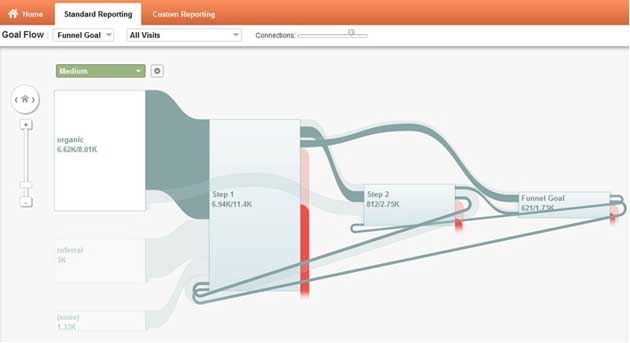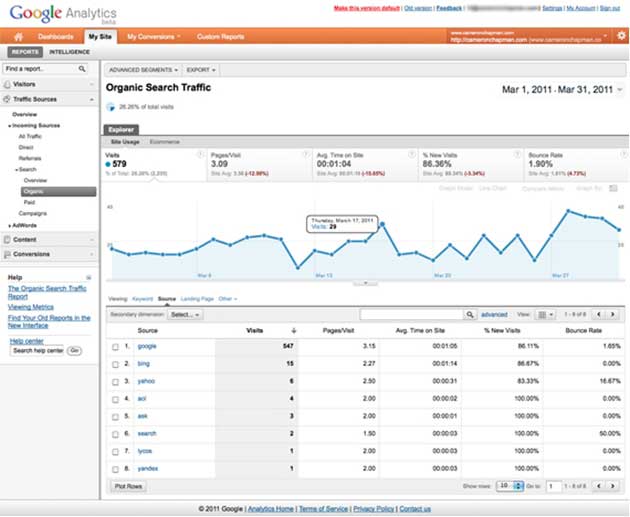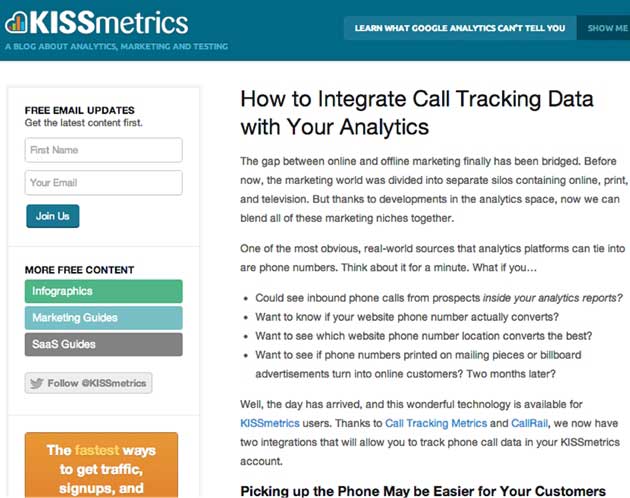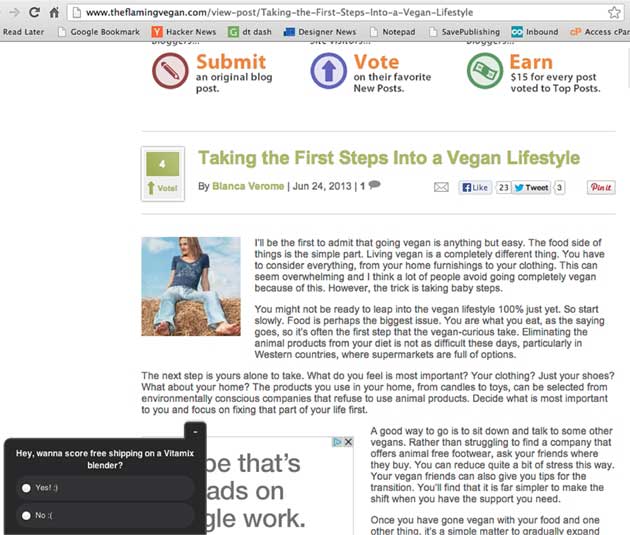In the previous installment, I outlined the key differences between a typical optimization plan and a holistic strategy for conversion rate optimization. In short, the difference is between tweaking random website elements based on what your boss wants, and truly improving your website by identifying your must-have user experience and engineering the conversion funnel to get users there quickly and effortlessly.
So how do you optimize your funnel, and shuttle visitors quickly along their way to the experience that will turn them not just into a conversion but into engaged users who love your product and spread the word to their friends?
In other words, how do you knock down the barriers on your way to the land of rainbows and unicorns?
Uncovering Pinch Points and Confusion
In your funnel you have bigger challenges than button colors. It's your job to find and fix them. Unlocking conversion improvements requires you to step back and get a good look from all angles at what's really transpiring in the conversion funnel for different visitor types.
Analytics is the place to start digging to uncover existing challenges and potential opportunities for performance improvement. Analytics packages, such as CrazyEgg, KISSMetrics, and Google Analytics, can help you find pinch points that are hurting conversion.
When you're looking at the data, the goal is to gain insights by looking at user behavior and comparing it to what you think should be happening in an ideal user experience.
Here are some common examples of where your ideal scenario is likely distorted by reality.
Funnel Drop-off Points
In your analytics package, look at each page in your conversion funnel and identify pages that have high levels of user drop-off. You can use the Funnel Visualization Report in Google Analytics, or a funnel report in KISSMetrics, to find these trouble spots.

Funnel visualization report in Google Analytics, via VerticalMeasures.com
The pages with high exit rates are strong candidates for areas you should focus your attention on first. Review the detailed analytics around those poor-performing pages to determine the issues creating the fall-off.
The page doesn't live in isolation. You need to look at it in context, including evaluating the source the visitors came from, the previous pages in their path, and the pages (if any) they visit before leaving.
Examine the navigation path of the user to and from that page. Do users simply leave the site, navigate to another page, or spend exceptional amounts of time there? You can use such information to create hypotheses about their behavior, which you can then test against.
Keyword Searches vs. Site Messaging Copy
Using the Traffic Sources > Search > Organic report in Google Analytics, you can see the top keywords driving traffic to your page. Compare those keywords with the messaging on your site. Do the inbound terms align with your product offering and value proposition?

Google Analytics organic search traffic data, via KISSMetrics
For example, if users are arriving to your site based on keyword searches for a product or feature you don't promote on your landing pages, you may be creating user confusion and reducing your conversion rates. To fix that problem, you can better align your promise and messaging with that inbound traffic.
If a large percentage of your inbound search traffic is obscured because of Secure search—that's the keyword "(not provided)" line in Google Analytics—you can get some insight into that secure search traffic https://blog.kissmetrics.com/crack-keyword-not-provided/ via various means.
Landing and Exit Pages
It's often surprising to site owners to learn that pages other than the website homepage are the biggest landing pages on the site. Posts on the blog and deep product pages can often rank well in search for highly relevant and valuable terms.
Unfortunately, those heavily trafficked inbound pages are often under-optimized, if optimized at all, for conversion. Typical blog pages have bounce rates near 80%, and most have no clear path for visitors to get to the must-have experience conversion.
If your site has important landing pages for traffic other than your primary homepage and marketing landing pages, you'll want to evaluate them for ways you can reduce the exit and bounce rates, and give visitors clear, actionable steps to help them convert.
The KISSMetrics blog does a great job of ensuring that traffic to their popular blog posts is routed properly toward the conversions that matter for their business.

Via KISS Metrics
The Flaming Vegan uses a Qualaroo Nudge to convert visitors to its blog pages into customers, ensuring that every content page pulls double duty as a lead generating landing page.

The Qualaroo Nudge (lower left) drives leads from deep content pages
Audience Actions by User Type
We know inherently that all users are not the same. Users from some sources are far more valuable than users derived from other sources. Users that come from email could be far more valuable than users coming from your social channels, for instance.
This concept applies not only for sources but also for other dimensions, including the following:
- New versus returning visitors
- Visitors from search versus those from other sources
- Visitors who view a certain page
- Visitors who spend a set amount of time on site
- Visitors who return a number of times
- Visitors who take a certain action, such as clicking a call to action.
The list goes on. Today's analytics packages let you create groups of users to compare how they behave and convert against other groups. You can—and should—segment users by a wide variety of facets to unlock hidden relationships to visitor value and conversion rate.
By segmenting, you can unlock the key differences between your most valuable users and the rest of the pack. You can also find the attributes that contribute to their value. For example, you may find that your most valuable customers always come in through a particular inquiry form on the same page. You can use that information to optimize your user flows to drive more users through that page.
With the data in hand, you're now able to accurately identify the most promising areas for conversion rate optimization efforts within your conversion funnel. What you find might surprise you. Your most popular traffic source may be a real drain on your business. A landing page that you recently designed and is the pride of the design team may be cutting potential conversion rates in half. That extra field that the head of marketing wanted to add to the lead capture form may be driving away highly qualified leads.
Time to Start Planning Strategy
You're now at a point where you can start planning your optimization strategy. But before you start tweaking and testing, you can go even deeper, from analytical data to discovering true visitor intent. Once you have intent identified, you'll know how to satisfy that intent through an optimization program that aligns the user experience with the user needs—driving real results for your business.
We'll dig into intent in the next installment.
Articles in this series
Article 1: How to Build an Effective Conversion Rate Optimization Plan
Article 2: How to Uncover Confusion in Your Conversion Funnel
Article 3: How to Drive Conversion Rate by Understanding Visitor Intent




